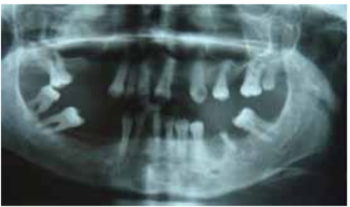Implant Supported Prosthesis in a Patient with Progeria: Case Report
DOI:
https://doi.org/10.17305/bjbms.2009.2808Keywords:
Implant supported fixed partial prosthesis, partial edentulism, progeria, multidis-ciplinary treatmentAbstract
Prosthodontic rehabilitation can be accomplished with fixed, overdenture, complete, or implant-retained prostheses. Dental treatment overcomes the patient’s functional, psychological, esthetic and phonation problems. Remaining healthy teeth may allow the dentist to fabrícate a removable partial overdenture, fixed partial prosthesis or implant - supported prosthesis. The retention of a number of abutments helps maintain a positive ridge form with greater height and volume of the alveolar bone, improving masticatory performance, as well as providing a more stable prostheses. Dental patients who have medical problems need many treatment procedures. Multidisciplinary treatment planning is invaluable for patient’s dental health. Progeria is a rare genetic condition where symptoms resembling aspects of aging are manifested at an early age. characteristic clinical findings of Progeria disease include abnormalities of the skin and hair in conjunction with char-acteristic facial features and skeletal abnormalities. The characteristic facies show protruding ears, beaked nose, thin lips with centrofacial cyanosis, prominent eyes, frontal and parietal bossing with pseudohydrocephaly, midface hypoplasia with micrognathia and large anterior fontanel. The other reported anomalies are dystrophic nails, hypertrophic scars and hypoplastic nipples. The findings that are nearly interested in dentistry are delayed dentition, anodontia, hypodontia, or crowding of teeth. This article presents the multidisciplinary dental treatment planning includes surgical, endodontic and prosthetic treatment of a patient with a history of progeria. In this case complete-arch fixed prostheses in both maxilla and mandible, supported by a combination of im-plants and teeth are reported.
Citations
Downloads

Downloads
Published
Issue
Section
Categories
How to Cite
Accepted 2017-12-11
Published 2009-08-20









